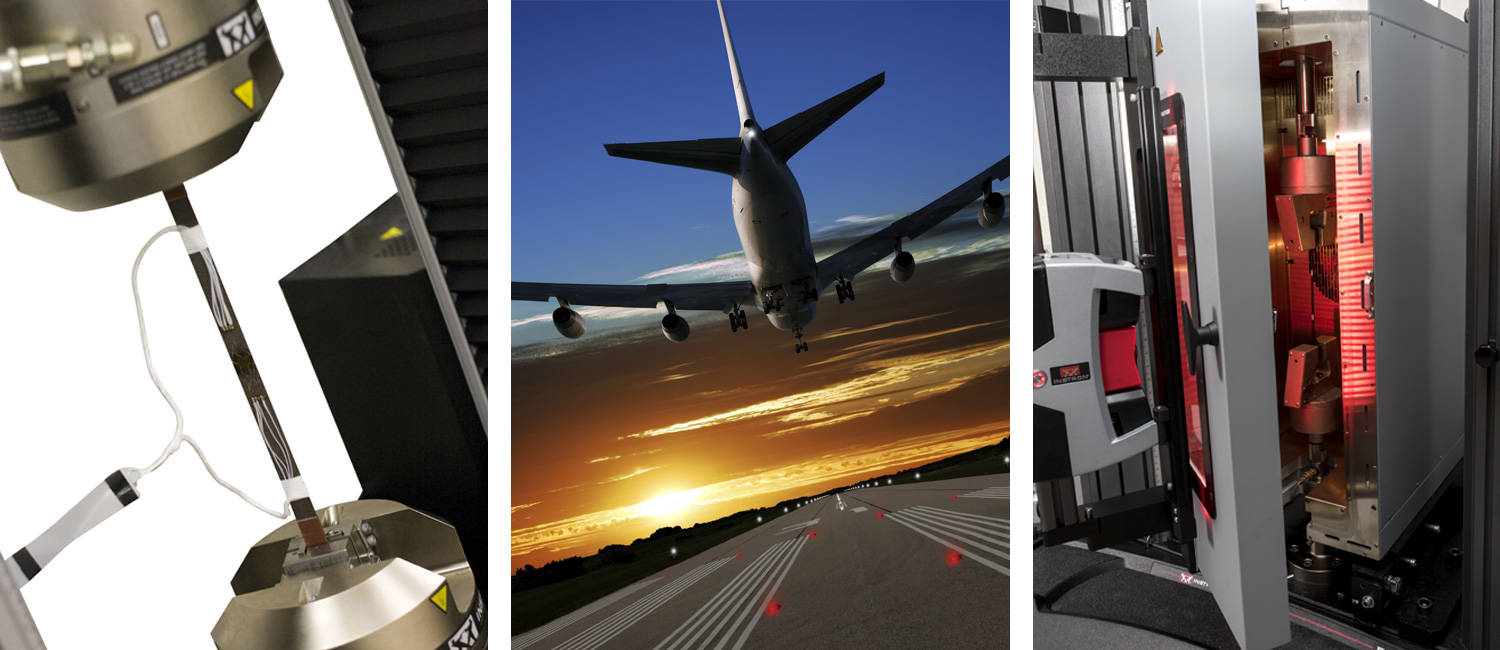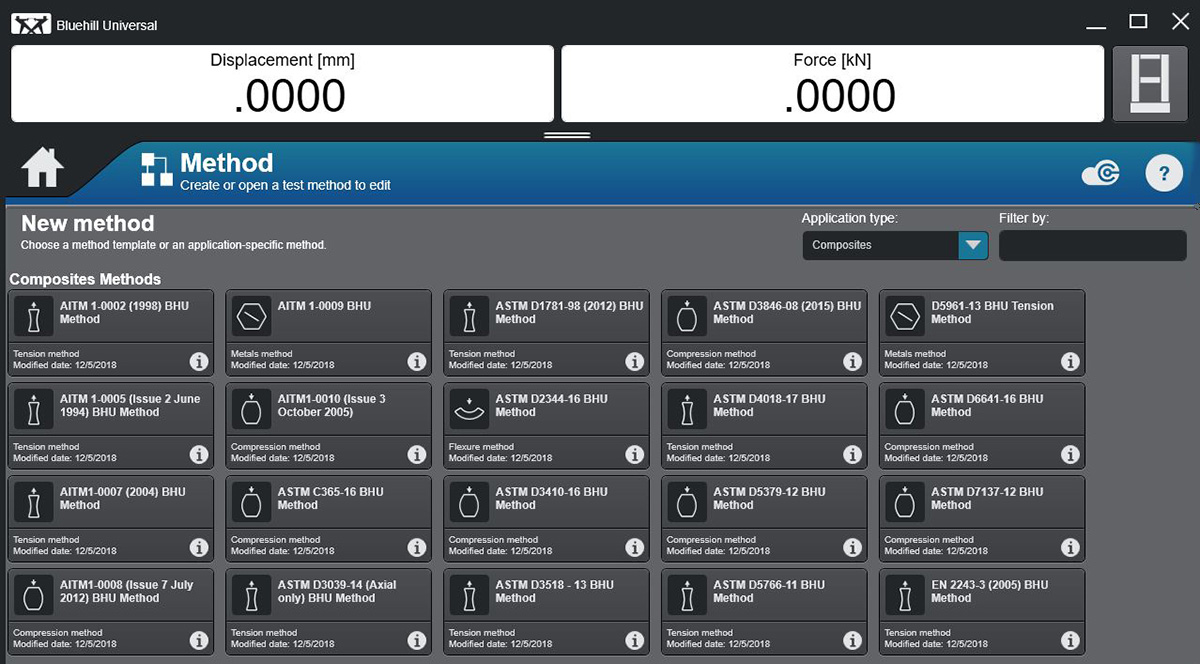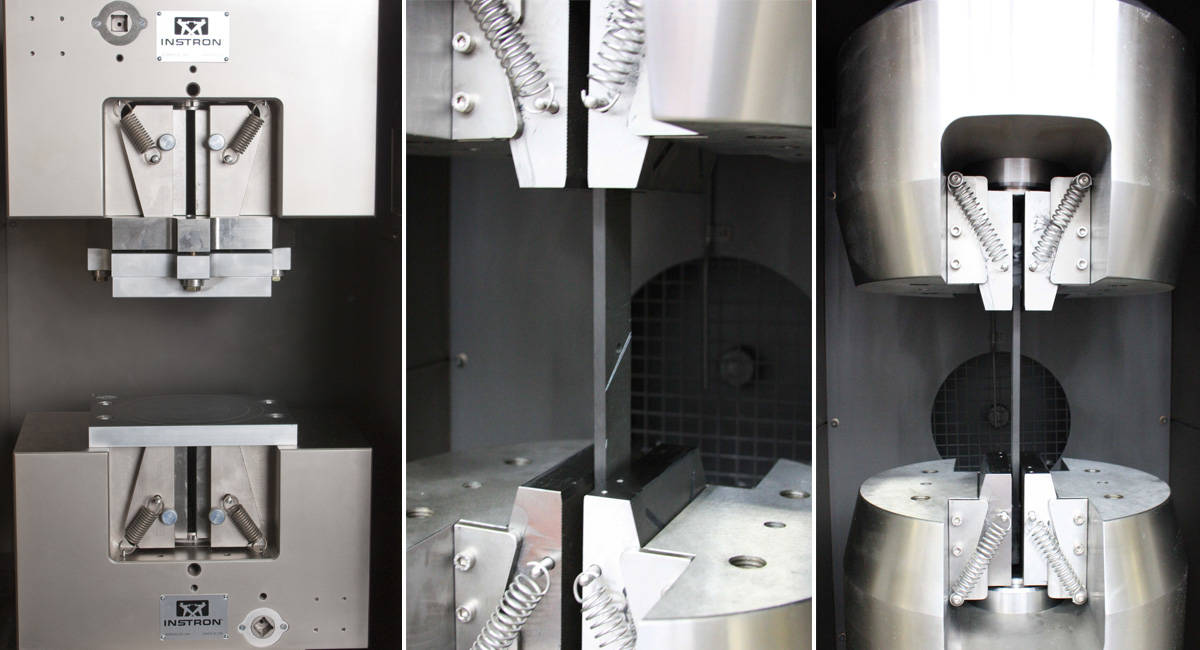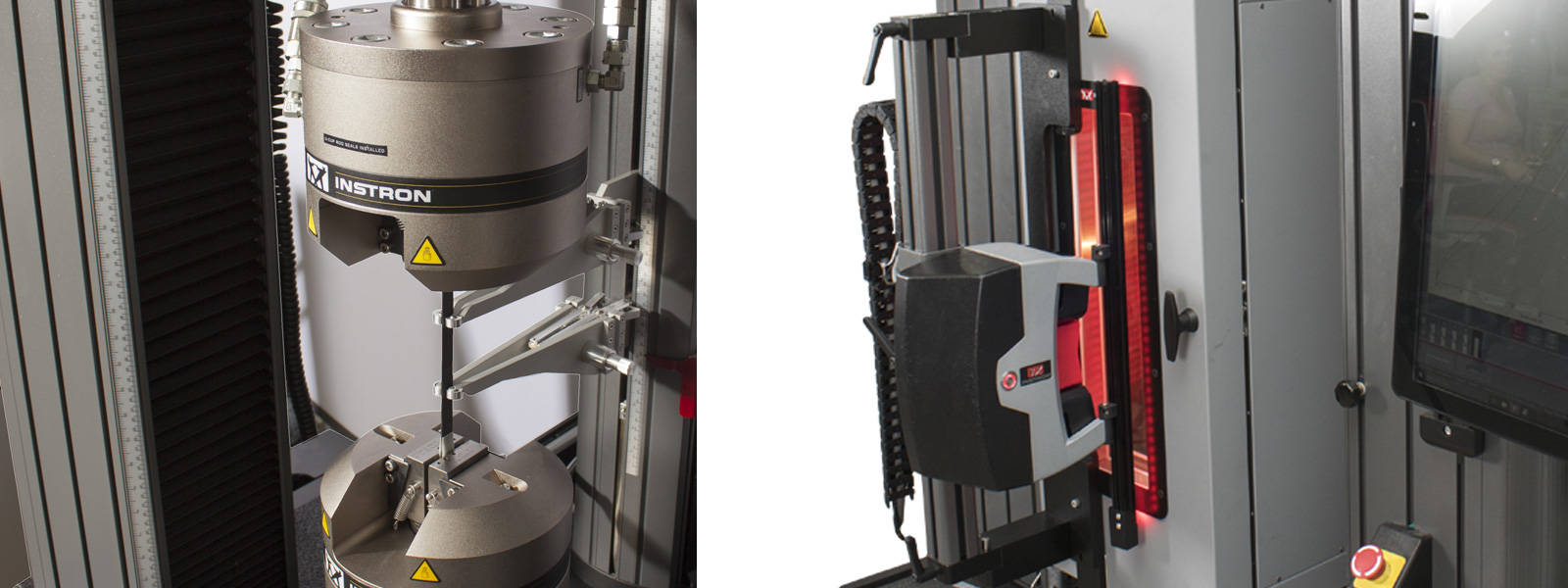MATERIALS TESTING SYSTEM
ASTM D3039 testing is performed on a table top or floor model universal testing machine. A 30 kN or 50 kN system may be sufficient for testing glass fiber composites, but a 100 or 250 kN system is needed for testing carbon fiber composites.
The grips used to hold composite specimens must provide a sufficiently strong and even pressure to prevent the specimen from slipping during testing. The jaw face patterns should be suitable for the material and be in good condition. The alignment of the grips should limit the bending strain to within 3-5% at moderate strain levels (>1000µɛ).
Suitable grip designs for ASTM D3039 include the Instron® precision manual wedge grips (2716-028 / 2716-030) and hydraulic wedge grips (2742-401 / 2742-501). Both of these grips use a moving body design and incorporate specimen location stops to provide reliable gripping of composites and other materials while achieving the required alignment.
A number of different devices are available for measuring strain during the test. The most common are extensometers, which are available in a variety of different options depending on the needs of your laboratory. The simplest is a fixed gauge length 2630 clip-on extensometer to measure axial strain. An operator must clip this directly onto the specimen at the beginning of each test and remove it before the specimen breaks.
If testing for Poisson’s ratio, a transverse extensometer must also be added to measure the change in width throughout the elastic region of the specimen. A standalone transverse extensometer can be used to supplement an existing clip-on or automatic extensometer, or a biaxial device can be used to measure both axial and transverse strain simultaneously.
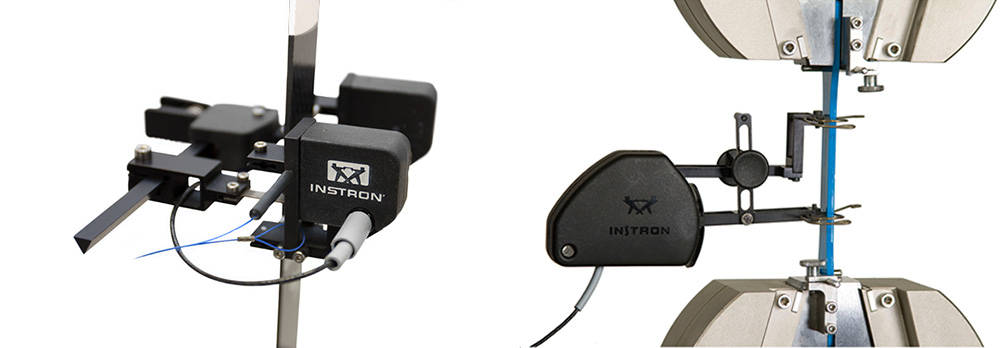
Oftentimes, the composites being tested are ultimately destined to be used under non-ambient conditions. To simulate these end-use applications, ASTM D3039 is performed inside a temperature chamber where heating or cooling (LN2 or CO2) can be used. Strain gauges or clip-on extensometers can be used up to a maximum temperature of 200 °C. Alternatively, a non-contacting advanced video extensometer (AVE 2) can be used. The AVE 2 is mounted outside of the temperature chamber and uses a camera to track deformations in the specimen throughout the test, with the advantage that test operators do not need to open and close the chamber door during testing.
Electrical resistance strain gauges are also useful in determining strain during ASTM D3039 testing. Unlike extensometers, strain gauges are consumable items that can be used to measure strain at failure. These gauges typically consist of a thin metal foil grid which is bonded to the specimen with an adhesive. Strain gauges can be used in environmental conditions from cryogenic temperatures to over 200°C, but require conditioning in order to generate a useful electrical signal. An easy-to-use adapter is available for use with the standard electronics in an Instron test machine. Because composite materials do not substantially deform before failure, the extreme precision of a bonded strain gauge can sometimes be preferable to the use of an extensometer for ASTM D3039 testing.
TEST CHAMBER
Testing composite materials under non-ambient conditions is normally performed inside a temperature chamber. These chambers use forced air convection along with resistive heating elements to achieve high temperatures and liquid nitrogen or carbon dioxide cooling to achieve low temperatures. The Instron range of 3119-600 series environmental chambers provides extensive temperature testing capabilities for evaluating material properties under non-ambient testing conditions. A full range of complementary grips, pullrods, and extensometers is available.
高容量万能材料試験機のカタログ
インストロンの高容量試験機には、電気機械および高荷重の油圧式試験システムが含まれ、引張および圧縮用途に対応します。荷重容量は100 kN~2,000 kNです。
最高クラスの6800シリーズ試験機のカタログ
インストロン6800シリーズ万能材料試験機は、他に類のない精度と信頼性を提供します。特許申請中のオペレーター保護機能に基づき、最新のスマートクローズエアキットおよび衝突緩和機能を搭載した6800シリーズは、材料試験をかつてないほどシンプルに、スマートに、安全にします。
Bluehill Universalのカタログ
Bluehill Universalソフトウェアは、タッチ操作と直感的なユーザーエクスペリエンスを念頭に構築されています。標準装備の試験メソッド、数秒で行われるQuickTest、強化されたデータエクスポート、そしてサービスとの直接通信を提供する新機能Instron Connectなどの機能が、これまでよりもシンプルでスマートな試験を可能にします。Bluehill 2やBluehill 3などの旧バージョンソフトウェアからは、簡単に最新バージョンのBluehillにアップグレードできます。
2743-401油圧式くさび型グリップ
インストロンの100 kN油圧式くさび型グリップは、高荷重試験のための革新的なソリューションであり、グリップ機能、利便性、オペレーターの安全性が強化されています。
複合材料試験のカタログ
インストロンの万能材料試験機は、複合材料業界で用いられる一般的なタイプの試験を行えるよう設計されています。具体的には、面内引張、厚さ方向引張、層間せん断、端末負荷圧縮、せん断、または複合荷重、および衝撃後圧縮などが含まれます。
